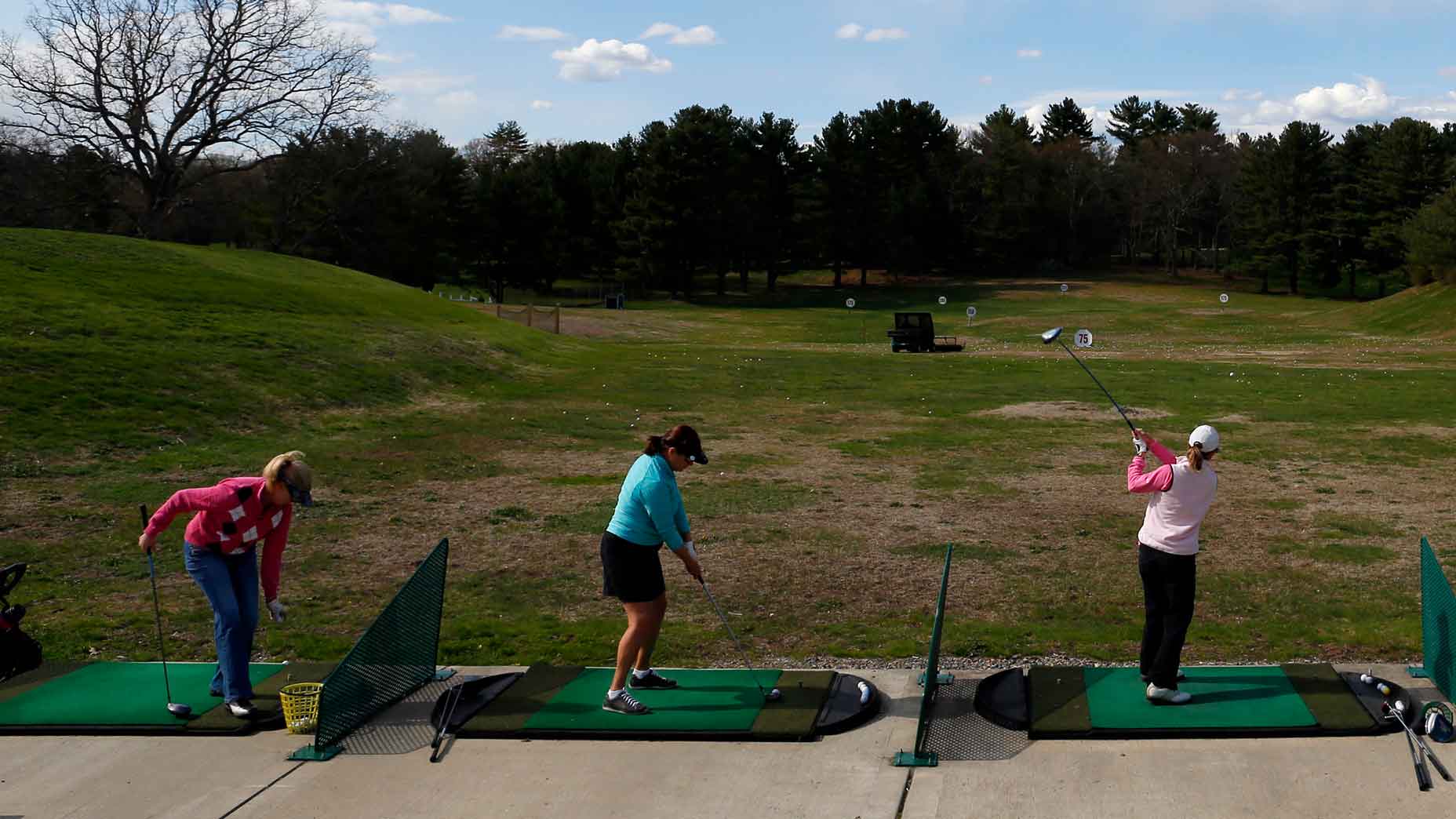You’ve just taken a swing lesson and you are hitting it great with your coach! You come back to the range the next day and remember a few golden nuggets and see some progress. Next, you head out onto the course and are baffled that your “old” swing has reappeared! Many players face this struggle of transferring their learning from a lesson or coaching session to the golf course and apply what they have learned in pressure situations. Here are four reasons why your swing lesson isn’t showing up on the course — and how to fix it.
The venue
The practice facility is a static, constant environment, usually with flat or preferred lies, and a solo target. Hitting lots of shots to one target (called block practicing) can be an effective way to build a new motor pattern, but transferring that move to a dynamic, ever-changing environment like the course isn’t always a quick adjustment.
On the course, you’re faced with dynamic lies, varying grass types and yardages, and only one attempt to hit the shot you need. A simple fix is to make your practice on the range more like a round on the golf course: change targets frequently, hit out of different grass types and play more games with consequences.
Pressure
Motor patterns take a long time to integrate-Unless you are picking up a quick reminder in your golf swing, changing a complete motor pattern, or way your body is firing muscles takes a long time to memorize into autonomic memory. To create a pattern that is “thoughtless” or some might say “muscle memory” really does take an exorbitant amount of time. Don’t expect what you learned on Tuesday, plus 50 practice swing on the range, to operate on the golf course Friday afternoon with your group. To change a pattern quicker make sure to be focused, engaged, consistent, and frequent. That means a little bit of practice every day (swinging at home) is better than one large practice session!
Most golfers don’t feel pressure when they are hitting balls on the range or practicing off the course. The moment we are in a group of friends and need to make a putt to win a friendly match, the pressure is on. When learning something new in our swing, it’s preferable to have a calm, distraction-free setting to absorb the information.
Eventually, you have to practice your new skills under pressure situations so that you can count on yourself to perform. Expecting your new moves to show up on the course without practicing them under pressure is a sure-fire way to get frustrated. Create games and mock-pressure situations while practicing on the range. Engage in competitions with friends (like who can hit it closer to the target) to simulate a pressure scenario. Practice with pressure!
Motor patterns
Unless you are picking up a quick reminder in your golf swing, changing a complete motor pattern, or way your body is firing muscles, takes a long time to memorize into autonomic memory. To create a pattern that is “thoughtless,” or some might call “muscle memory,” really does take an exorbitant amount of time.
Don’t expect what you learned on Tuesday, plus 50 practice swing on the range, to become second nature on the golf course by Friday afternoon. To change a pattern more quickly, make sure to be focused, engaged, consistent, and frequent. That means doing a little bit of practice every day (even swinging at home) is better than one large practice session!
Comfort
I know many students who don’t feel comfortable with their new moves yet, so when they’re on the course, their old motor pattern shows up almost immediately and they go back to their comfort zone. It’s quite typical for our brains to fall back into comfortable patterns and loop through what we know best. Going out on the course without a focus on score, and using the course as a practice arena can increase your comfort level for trying out new things. When you have an opportunity to create new habits on the course without the consequences of score, you can increase your tolerance of trying out those moves under pressure. Soon enough, your comfort level with your new move will increase and you’ll start to perform better on the course.
Reflect on these four reasons why your new swing isn’t showing up when you want it to and try out some of the suggestions to better transfer what you learn in a swing lesson to the course — especially under pressure when it counts!
Dr. Alison Curdt is a PGA Master Professional and a LPGA Master Professional at Wood Ranch Golf Club in Los Angeles, Calif. She is also a licensed sport psychotherapist with a doctorate degree in clinical psychology.
Does your bag need an overhaul? Visit the expert fitters at our affiliate company, True Spec Golf.
